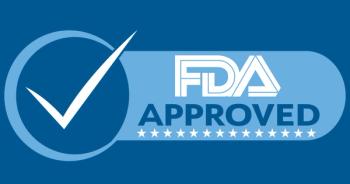
Trisha Amboree, PhD, highlights how FQHCs can boost cervical cancer screening
Declining national screening rates highlight the need for increased investment, education, and innovative approaches to expand access.
Cervical cancer screening rates have been steadily declining in the US over the past 10 to 15 years, with particularly low rates among patients served by federally qualified health centers (FQHCs). According to Trisha Amboree, PhD, national screening adherence among eligible individuals continues to fall annually, with only about 50% to 55% of patients in FQHCs up to date on screening.
This decline reflects a combination of individual- and system-level barriers that limit access to preventive care for the more than 30 million people who rely on FQHCs for their primary health services. At the individual level, patients often face challenges such as limited knowledge about the importance of screening, confusion about screening intervals, or a lack of understanding about the purpose of the test.
Additionally, logistical barriers such as transportation difficulties or competing life priorities can further reduce participation in screening. System-level barriers also play a significant role, including provider shortages, limited clinic resources, and competing clinical demands that make it challenging to prioritize preventive services such as cervical cancer screening.
Amboree emphasized that improving cervical cancer screening rates in FQHCs requires targeted investment and strategic support. Strengthening these centers as essential pillars of the health care system could lead to meaningful improvements in population health.
Evidence-based interventions—such as increased funding, technical assistance, and workforce retention initiatives—are critical to sustaining and expanding screening capacity. New screening modalities, such as FDA-approved primary HPV testing with self-collection, offer a promising way to overcome traditional barriers by reducing the need for pelvic exams and allowing patients greater privacy and convenience.
Patient navigation and educational initiatives are also essential tools for increasing screening uptake. These approaches can help patients understand the importance of screening, navigate the health care system, and follow through with necessary appointments. Amboree stressed the importance of a team-based approach in which every member of the clinical care team—physicians, advanced practice providers, nurses, and support staff—plays an active role in encouraging patients to be screened, even during visits unrelated to gynecologic care.
FQHCs collectively serve more than 7 million individuals eligible for cervical cancer screening, many of whom fall into groups that are typically underscreened, including those with public insurance, rural residents, and individuals living at or below 200% of the federal poverty level. Improving screening rates within FQHCs could therefore have a significant national impact, reaching one-third of all underscreened individuals who are publicly insured and substantially improving cervical cancer prevention efforts across the US.
No relevant disclosures.
Reference
Amboree TL, Adsul P, Damgacioglu H, et al. National outcomes of increasing cervical cancer screening in federally qualified health centers. JAMA Netw Open. 2025;8(10):e2538593. doi:10.1001/jamanetworkopen.2025.38593
Newsletter
Get the latest clinical updates, case studies, and expert commentary in obstetric and gynecologic care. Sign up now to stay informed.










